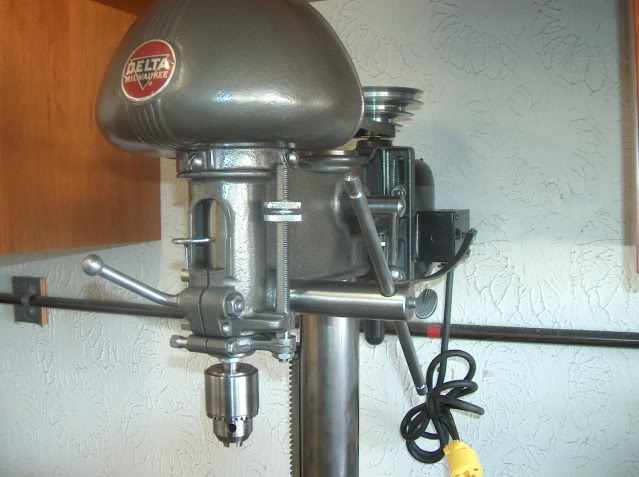jeff3285
Member
can anyone tell what drill press is good for drilling pen blanks,,not much runout,,,thank you
It's called a lathe!:biggrin:can anyone tell what drill press is good for drilling pen blanks,,not much runout,,,thank you
kind of difficult to driil a square pen blank using a collet chuck without turning them round first.Strictly for drilling pen blanks a lathe with a collet chuck is hard to beat.
I agree with you there!As a bonus, the collet chuck may become your most used accessory in pen making.
here as well!Of course I wouldn't want to give up my drill press for all the other drilling projects. If you know you want a drill press and plan to use it for drilling pen blanks, get one with plenty of Quill travel. Nothing worse than having to stop the tool and redo your setup because your at the limit of your quill travel but haven't reached the depth required for the tube.
kind of difficult to driil a square pen blank using a collet chuck without turning them round first.Strictly for drilling pen blanks a lathe with a collet chuck is hard to beat.
Delta's 18-900L has a six inch quill travel.That said, I read recently that Jet has introduced a new DP notable only that it has a full 5" of quill travel. Which is the thing that limits the drill methods mentioned. The one thing I hate is to get to full quill travel on my DP (or my lathe tailstock for that matter)and have to reset to get that extra travel. Sometimes it's just a short reset but on a long clicker pen it's quite a bit more travel required. This new DP would eliminate that nuisance.
I was recommended to drill on a lathe when I started out. Great, great advice. Cut down on blowouts incredibly well and if you have a square blank then you'll get a centered hole.
Great great move...
How does drilling on the lathe reduce blow outs?
The best method I have found for eliminating blow outs when drilling, on the lathe or drill press, is to leave your blank long, drill just beyond the length of the tube and then cut the blank back to the hole. When using a collet Chuck this method eliminates getting debris in the Chuck which, if not cleaned out, can really mess up the next one. DAMHIKT

